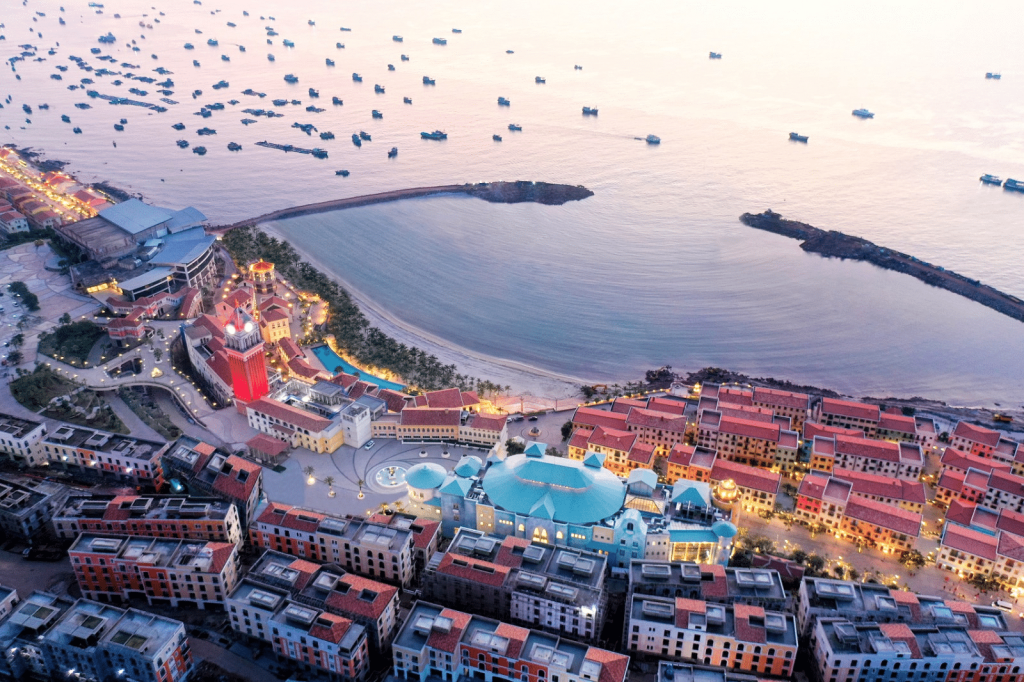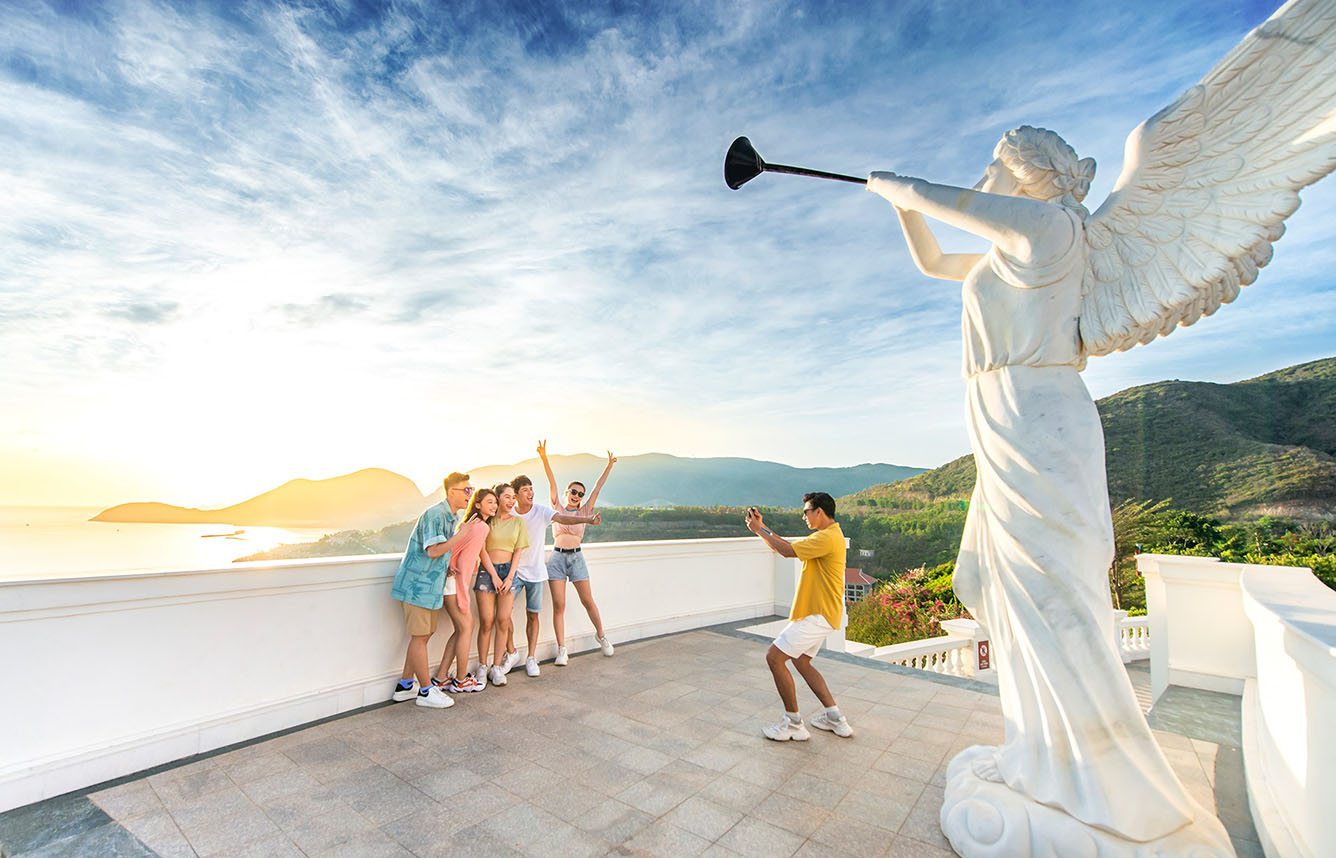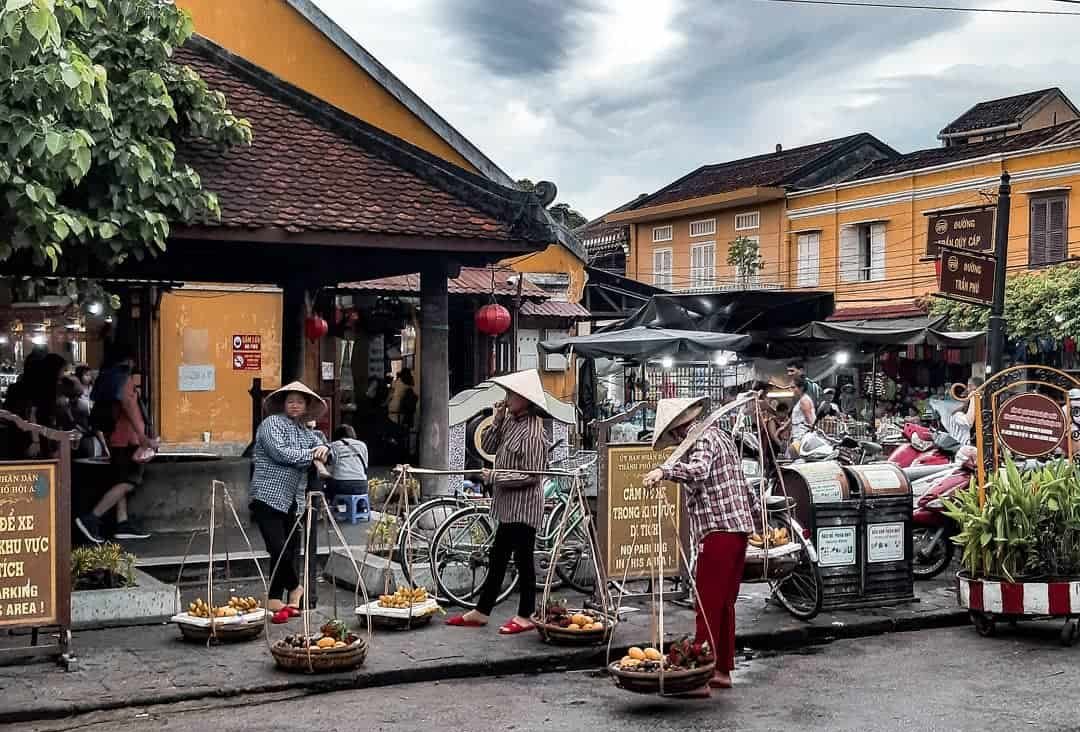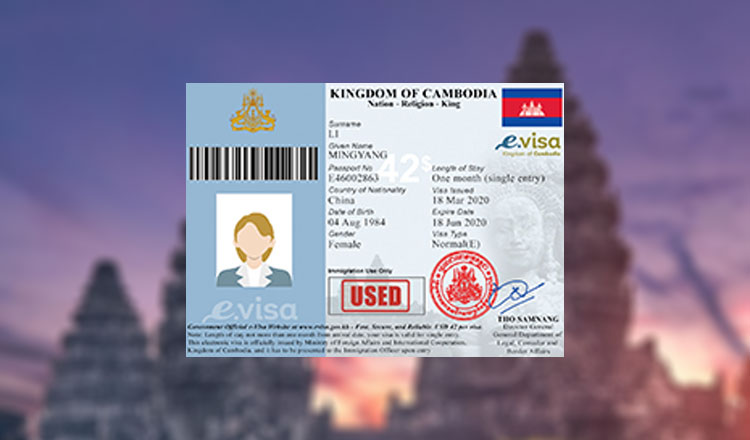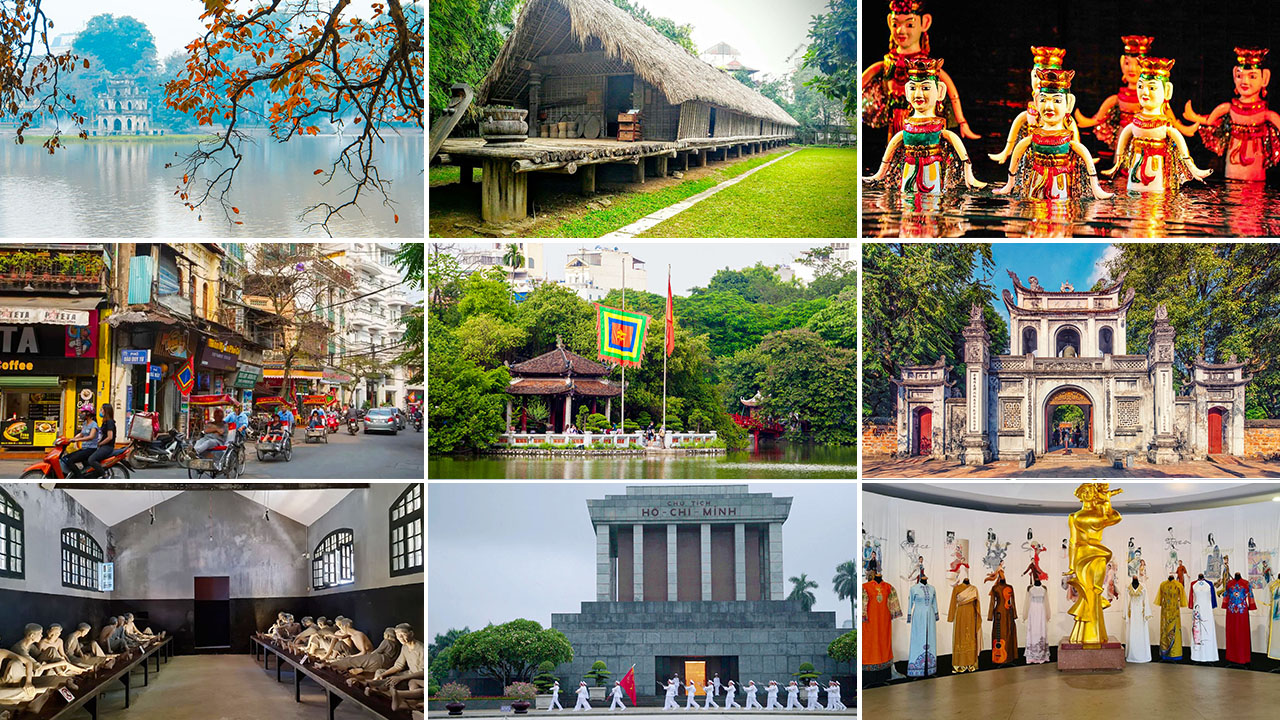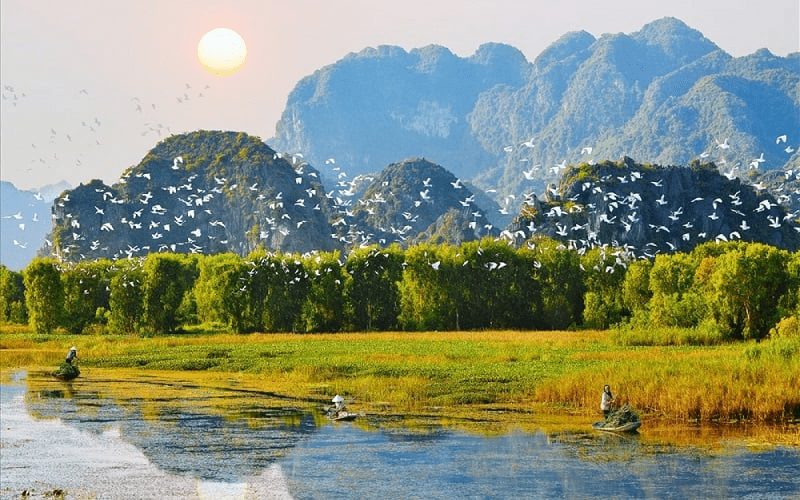
The best time to visit Vietnam depends on the region, but generally, November to April is the best time because of dry weather and moderate temperatures. Vietnam’s weather is diverse: the north experiences four distinct seasons with cool, dry winters and hot, rainy summers; central Vietnam has a warm, dry season from February to August and a rainy season with potential typhoons from September to January; the south enjoys a tropical climate with a dry season from November to April and a rainy season from May to October. This climatic variation offers travelers a range of experiences, from exploring northern cultural sites in the cooler months to enjoying southern beaches during the dry season. This guide lets you know the best time to visit different Vietnam regions.
When is the best time to visit Vietnam by region?
1. Northern Vietnam (Hanoi, Halong Bay, Sapa, Ha Giang)
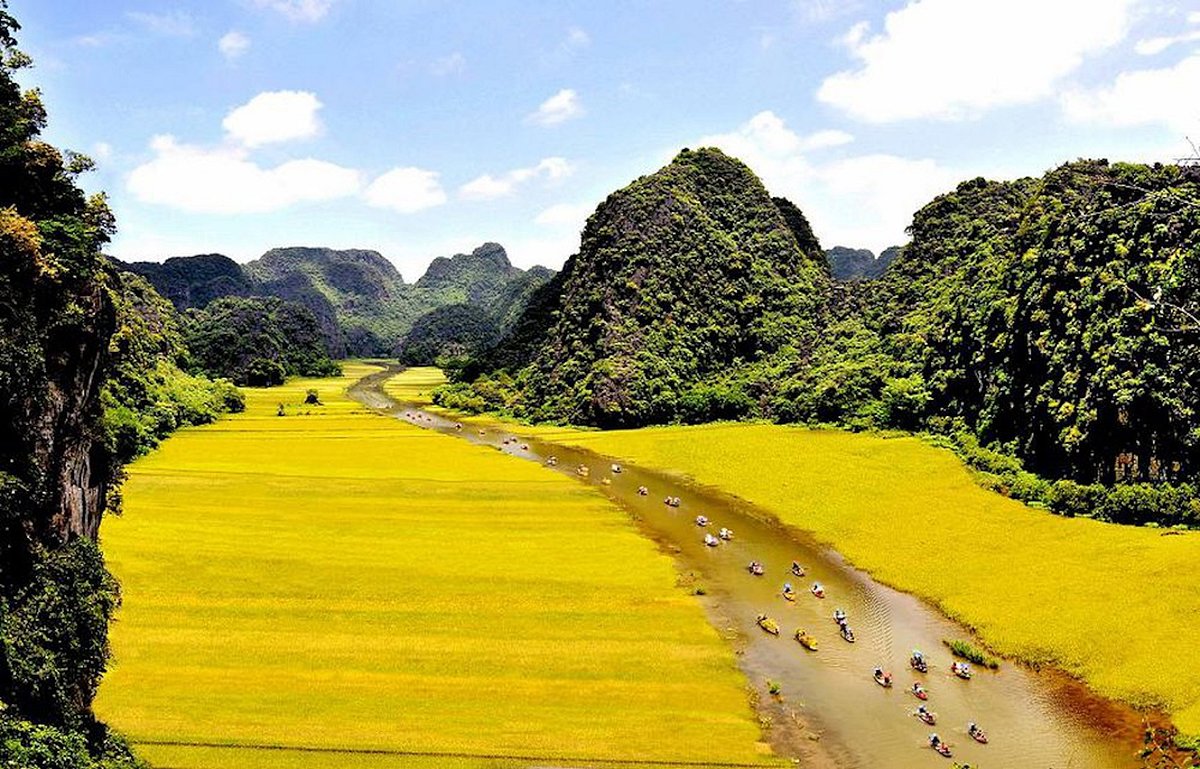
Best Time: October to December, March to April
This is an ideal time for sightseeing in Hanoi, taking a boat ride to Halong Bay, and hiking in Sapa and Ha Giang since the weather will be comfortable with mild temperatures and little rain. However, it gets quite cold in winter (December to February), especially in the mountains. On the other hand, summer (May to September) brings hot and humid weather with frequent heavy rains, so be prepared if you plan to visit during this time.
2. Central Vietnam (Hue, Da Nang, Hoi An)
Best Time: February to May
It’s sunny and dry during this time, and it is great for exploring the historical spots in Hue, chilling at Da Nang’s beaches, and wandering around the old streets of Hoi An. But from September to January, Central Vietnam might get lots of rain and sometimes even typhoons.
3. Southern Vietnam (Ho Chi Minh City, Mekong Delta, Phu Quoc)
Best Time: December to April
The dry season offers hot and sunny weather, ideal for exploring Ho Chi Minh City, navigating the Mekong Delta’s waterways, and enjoying Phu Quoc’s beaches. The rainy season (May to November) brings high humidity and frequent, heavy downpours, though mornings are often dry and suitable for activities.
Travelers should consider visiting Vietnam during these optimal times as this will ensure that they enjoy the best weather conditions and fully enjoy the diverse attractions each region has to offer.
The best time to visit Vietnam by month
January, February, March
During these months, the weather in Northern Vietnam is cool, with occasional drizzles and high humidity in some areas. This period coincides with Tet (Lunar New Year), the most significant festival in Vietnam, and offers a unique opportunity to experience traditional festivities and cultural events. Recommended destinations include Hanoi, Nam Dinh, Lang Son, Sapa, and Ha Giang, where you can immerse yourself in the festive atmosphere and explore historical and natural attractions.
March and April
The dry weather during March and April, with minimal rainfall and moderate sunshine, makes it ideal for various outdoor activities. This is a perfect time for hiking, cycling, sightseeing, and exploring nature reserves. The pleasant weather conditions allow for comfortable travel and outdoor adventures, whether visiting the scenic mountains or the lush countryside.
June, July, August, September
These months mark the peak of the beach tourism season in Vietnam as the country enters summer. It’s a popular time for seaside vacations, with many tourists flocking to the coast to enjoy water activities such as swimming, sunbathing, snorkeling, and surfing. In summer, Vietnam’s stunning beach destinations, such as Nha Trang, Da Nang, and Phu Quoc, offer pristine beaches, crystal-clear waters, and vibrant marine life.
October, November, December
As the year progresses into October, November, and December, the weather in the northern region of Vietnam becomes colder. Meanwhile, the central and southern regions experience cooler and more pleasant temperatures that create a comfortable climate for travel. This period is ideal for exploring central and southern destinations, where you can enjoy cultural sites, historical landmarks, and natural beauty without the intense summer heat or the heavy rains of the monsoon season.
When is the best time to visit Vietnam by destination?
Best time to visit Hanoi
The best time to visit Hanoi is during autumn (September to November) and spring (February to April) when the weather is mild and pleasant, with temperatures ranging from 18°C to 30°C (64°F to 86°F). These seasons offer comfortable humidity, beautiful scenery with autumn foliage or spring blossoms, and vibrant cultural festivals like the Mid-Autumn Festival and Lunar New Year celebrations. This period is ideal for exploring Hanoi’s historic sites, parks, and lakes without the discomfort of summer heat or winter chill.
Best time to visit Sapa and Ha Giang

The best time to visit Sapa and Ha Giang is from September to November and March to May. The weather is cool and dry during these periods, ideal for trekking and outdoor activities. The terraced rice fields in Sapa are most picturesque in autumn when they turn golden before harvest. Spring offers blooming flowers and lush landscapes in both Sapa and Ha Giang. These seasons provide clear skies, stunning scenery, and optimal conditions for exploring these northern Vietnamese destinations’ natural beauty and cultural richness.
Best time to visit Ninh Binh
The best time to visit Ninh Binh is during the dry season, from November to April. Plenty of outdoor activities are available during this time, such as boat tours, cycling, and exploring the area’s limestone karsts and rice paddies. The weather is cool and pleasant during this time, with temperatures ranging from 18°C to 25°C (64°F to 77°F). A visit in late spring (April) provides stunning scenery as you witness the vibrant green rice fields before harvest. This season ensures comfortable travel conditions and the best experience of Ninh Binh’s natural beauty.
Best time to visit Halong Bay
The best time to visit Halong Bay is during the spring (March to May) and autumn (September to November) seasons. It is ideal for cruising and exploring the bay’s limestone islands and emerald waters during these months, as the weather is generally mild, with temperatures ranging from 20°C to 30°C (68°F to 86°F). Clear skies and blossoming flowers abound in spring, while cooler temperatures and low humidity in autumn make swimming and kayaking perfect outdoor activities. In addition to this, visiting during the winter and spring saves you from heavy rainfall and summer storms, meaning a happier and safer trip to Halong Bay.
Best time to visit Hue
The best time to visit Hue is during the dry season, from March to August. A warm, sunny climate with minimal rainfall makes this the best time to explore the city’s historical sites, such as the Imperial City, tombs, and pagodas. The months of March to May offer comfortable temperatures ranging from 20°C to 30°C (68°F to 86°F) and make outdoor activities enjoyable without the heat and humidity of the summer months. Additionally, visiting during the dry season allows for clearer skies and better visibility and enhances the experience of Hue’s natural beauty, including the Perfume River and surrounding landscapes.
Best time to visit Danang and Hoi An
The best time to visit Da Nang and Hoi An is from February to May and September to November. The weather is generally mild and dry during these periods, and it is perfect for exploring the cities and nearby attractions.
From February to May, pleasant temperatures range from 20°C to 30°C (68°F to 86°F) with lower humidity levels. This makes outdoor activities like beach visits, city tours, and exploring the Marble Mountains in Da Nang or the ancient town of Hoi An more comfortable.
Similarly, September to November offers similar weather conditions, with temperatures cooling down after the summer peak, ranging from 22°C to 30°C (72°F to 86°F). This period is particularly great for enjoying the beaches, attending local festivals, and exploring the cultural heritage sites of Hoi An, such as the Japanese Covered Bridge and the Ancient Town.
Best time to visit Nha Trang
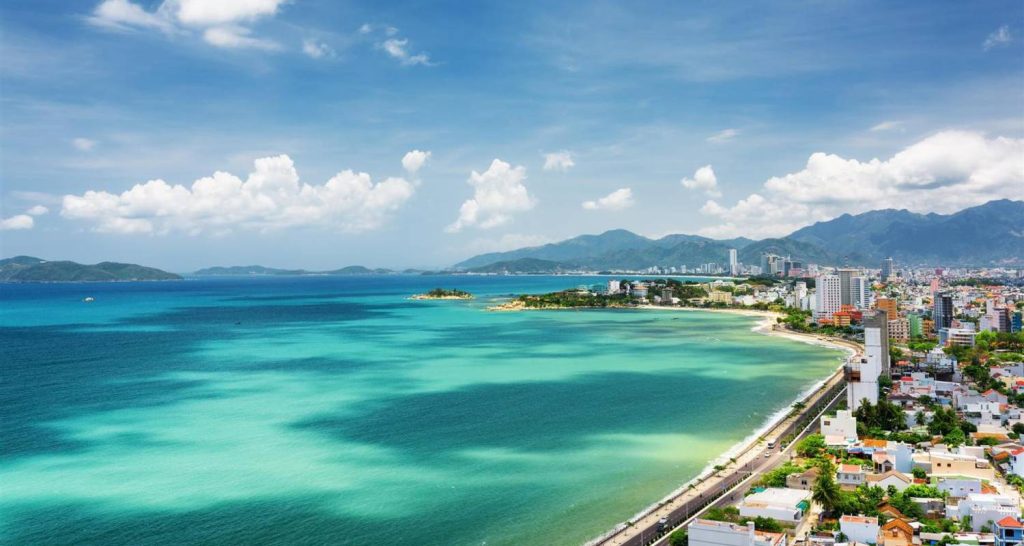
The best time to visit Nha Trang is from February to April when the weather is warm, dry, and relatively stable. During these months, Nha Trang experiences sunny days with temperatures ranging from 25°C to 30°C (77°F to 86°F) and minimal rainfall. This time is perfect for beach activities, snorkeling, and exploring the city’s attractions.
Visiting during this period allows you to avoid the peak of the rainy season, typically from September to December. Additionally, it’s advisable to avoid the summer months from May to August when Nha Trang experiences high temperatures and occasional heavy rainfall, which can disrupt outdoor activities and beach visits.
Read more: Hoi An Vietnam: Best Things To Do In Hoi An
Best time to visit Ho Chi Minh and Mekong Delta
The best time to visit Ho Chi Minh City (formerly Saigon) and the Mekong Delta is during the dry season, which runs from December to April. During these months, the weather is typically warm and relatively dry, with temperatures ranging from 25°C to 35°C (77°F to 95°F).
Visiting during the dry season allows you to enjoy outdoor activities such as exploring the bustling streets of Ho Chi Minh City, visiting historical sites like the War Remnants Museum and Cu Chi Tunnels, and taking boat trips through the Mekong Delta’s intricate waterways.
The dry season coincides with the Tet holiday (Vietnamese Lunar New Year), which falls between late January and mid-February. This is a vibrant time to visit, with colorful celebrations, traditional customs, and a festive atmosphere throughout the city and the Mekong Delta region.
Avoiding the rainy season, which typically occurs from May to November, ensures that you can fully enjoy your time in Ho Chi Minh City and the Mekong Delta without the risk of heavy rainfall and potential flooding, which can disrupt travel plans and outdoor activities.
Best time to visit Phu Quoc
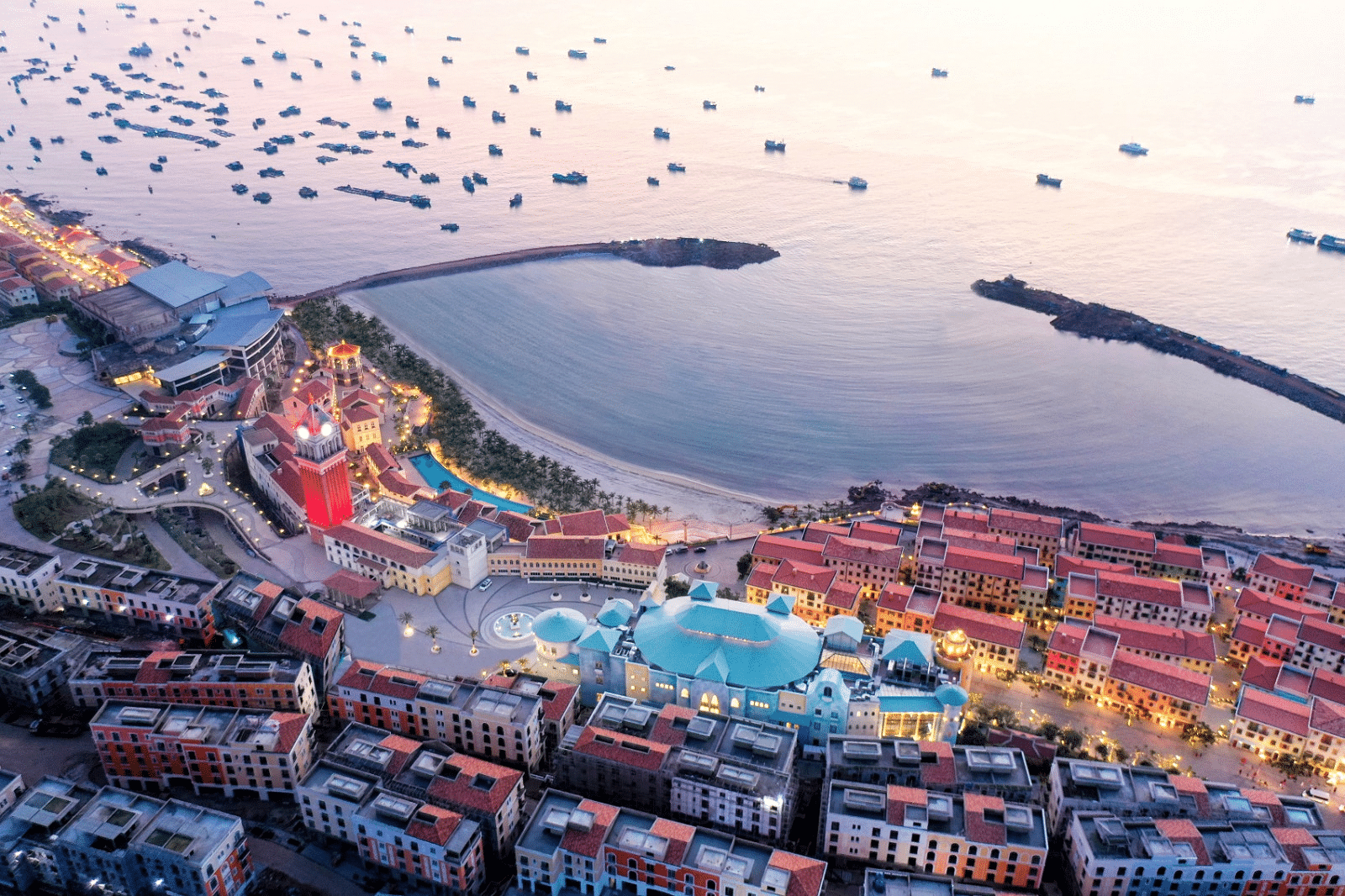
The best time to visit Phu Quoc Island is during the dry season, from November to April. During these months, the weather is generally sunny and dry, with minimal rainfall. It is ideal for beach activities, snorkeling, and exploring the island’s natural beauty.
Specifically, the months of December to March are considered the peak season, with temperatures ranging from 25°C to 30°C (77°F to 86°F) and clear skies. This period offers the most favorable conditions for enjoying Phu Quoc’s pristine beaches, such as Sao Beach and Long Beach, and water sports, like diving and snorkeling in crystal-clear waters.
Visiting during the dry season allows you to avoid the monsoon season, which typically occurs from May to October and brings heavy rainfall and occasional storms to the island. While Phu Quoc is still accessible during the wet season, activities may be limited due to the weather conditions.
Overall, November to April offers the best weather for a memorable and enjoyable visit to Phu Quoc Island, ensuring you can make the most of its stunning beaches, lush landscapes, and vibrant marine life.
Read more: Travel Agency Vietnam: Best Travel Agency for Vietnam Tours

